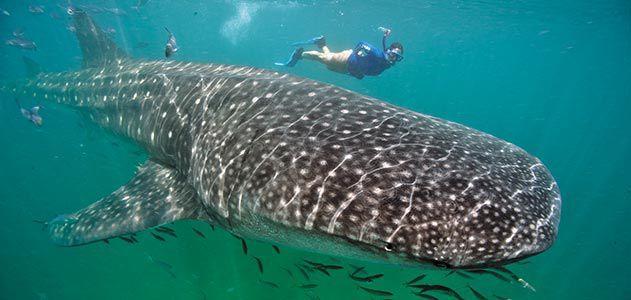
Viva Baja!
This year’s ENVS 144 class, Natural History of Baja California, had a remarkable experience traveling to Mexico over spring break. Spoiler alert: WHALE SHARKS!
But first….let’s back up a bit. ENVS 144 meets all through Winter quarter and students get a crash course in Baja natural history: the biology, ecology, and evolutionary relationships of plants, birds, mammals, fish, herps, and invertebrates that can be found in Baja, as well as a smattering of geology and the history of science.
Then, we go on a 10-day expedition, hiking, camping, kayaking, swimming, snorkeling, and looking for wildlife in the Cape region and the Isla Espiritu Santo island complex in the Sea of Cortez. Journaling is constant. Students draw, photograph, and describe what they see, with an eye towards making identifications, expressing wonder, and asking newly inspired questions about the natural world.
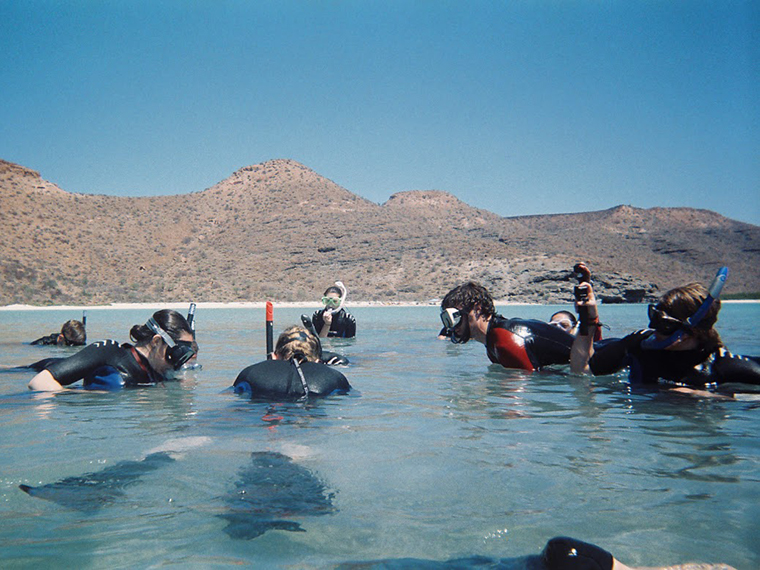
Students hunting nudibranchs at low tide.
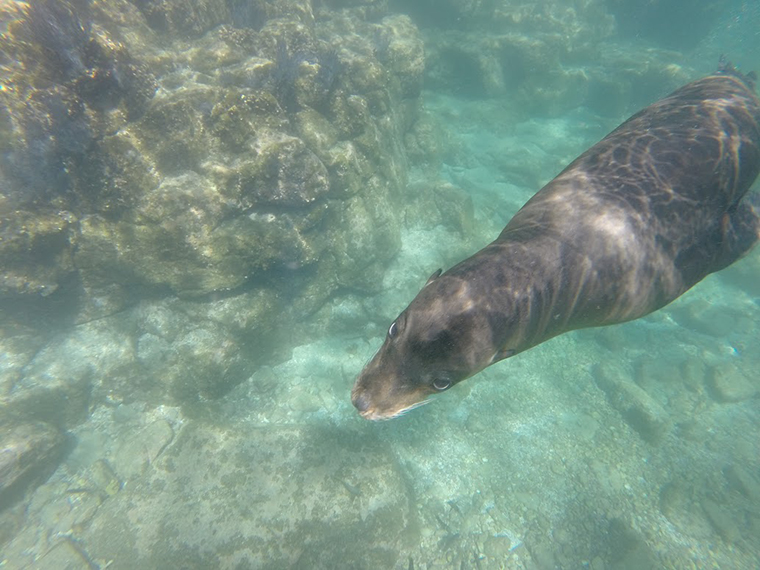
One of our playful snorkel buddies.
This year’s trip got off to a rocky start—no, we did NOT actually sink the boat, despite rumors to the contrary—but we had a fantastic expedition and identified 175 species. Students swam with playful sea lions, caught nudibranchs and crabs and seastars in their hands, watched magnificent frigatebirds tend their young, climbed cactus-covered mountainsides, and pointed out constellations while soaking in hot springs under the night sky.
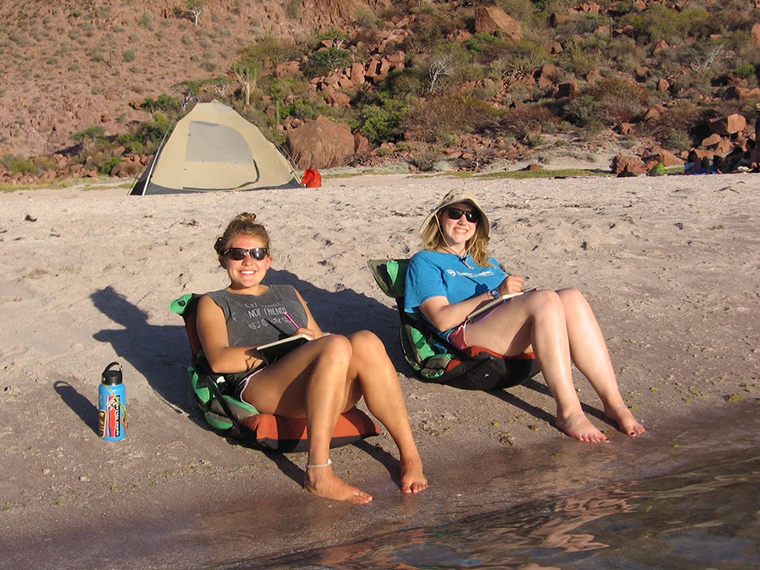
Doing homework, Baja-style.
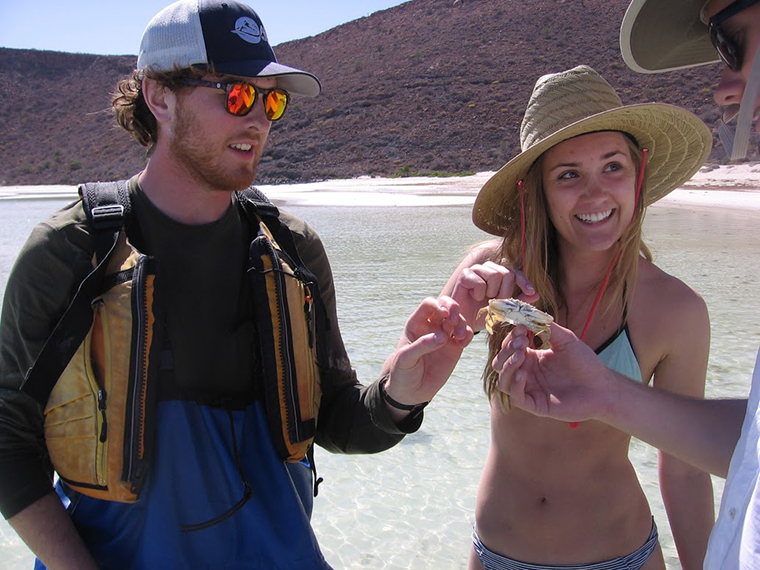
The Baja course is a hands-on experience.
Besides a renewed appreciation for nature (and probably a renewed appreciation for flush toilets), the trip involves deepening friendships, creating mutual trust, and reflecting on the experience. The last night features a poetry slam, with students reading poems, including original compositions, aloud around a bonfire.
So…about those whale sharks! They are the largest fish in the sea, more than 12 meters long (40 feet), although the puny little juveniles we swam with were a mere 20-25 feet long. We went out with a whale shark researcher who photographed the sharks for monitoring, then got to swim alongside these massive, gentle filter-feeding sharks. For many, observing these incredible creatures up close was the highlight of the whole experience.
If you want to go, too, the course will next be offered in Winter 2019. Plan ahead to fit it into your schedule! Trip costs in the past have run ~$1500 plus airfare. Admission is by application only and the trip is limited to 17 students. All majors are welcome, but some biology or environmental science background is helpful. For more information, see Dr. Virginia Matzek.
Snorkeler with a whale shark (courtesy Smithsonian Magazine).